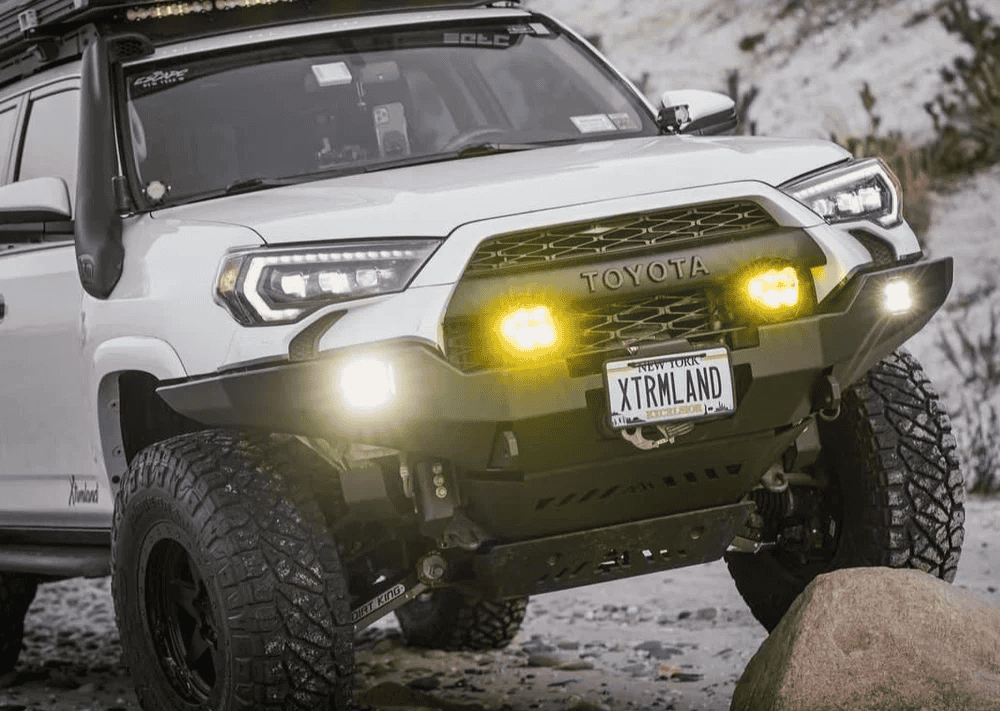Overland Vehicles

A bed rack creates a strong, modular platform above a truck bed or van rear section so you can carry bulky gear while keeping bed space usable. It moves heavy items like a rooftop tent, recovery boards, and full size cargo boxes to a higher plane, which clears the bed for bikes, coolers, and tools. A well planned rack also centralizes accessory mounts, so shovels, traction boards, and fuel storage stay secure and reachable.
Choosing height and adjustability starts with your use case. Low profile racks reduce wind noise and fit in garages. Mid height systems balance bed access with canopy clearance. Full height builds maximize volume for tall loads and create a level surface for tents and long cargo. Consider how you enter the tent, the bikes you transport, and whether you need clearance for coolers or a decked drawer system.
Dynamic rating is what a rack safely carries while moving. Static rating is what it holds when parked, which matters for rooftop tents. Match both ratings to your gear, factoring in bars, mounts, and fasteners. Spread the load across multiple attachment points and keep mass low and centered to reduce sway and stress on the bed.
Cross bar shape and fairing placement influence wind noise. Teardrop bars and a front fairing calm airflow. Tighten fasteners to spec and add vibration control where bars meet towers. A quiet rack usually signals correct fitment and balanced airflow.
Mounting style should follow factory structure, not sheet metal. Stake pocket mounts lock into reinforced bed caps. Track systems bolt into bed rails where reinforcement exists. Some platforms use under bed brackets that tie into stronger points. When hardware passes through painted surfaces, seal and treat edges to prevent corrosion.
If your truck runs a spray in liner or a drop in liner, address compression and spacing so brackets sit flat. Bed mat thickness can change clamp depth, so confirm thread engagement. For vehicles with a tonneau cover, verify clamp placement and lid travel before final torque. On vans with interior racks, use proper reinforcement plates and spreader bars to protect the roof and side panels.
Accessory wiring benefits from planning. Route light and camp power leads through grommets with drip loops, then fuse at the source. Keep harnesses off sharp edges with loom and edge trim. Use weather rated connectors so removal is simple when the rack comes off for service or storage.
Fastener choice makes a difference. Use corrosion resistant hardware matched to the base metals. Apply the correct thread treatment where required and torque in stages. Re check torque after the first few hundred miles as parts settle.
A rack is part of a system. If you carry a rooftop tent, confirm ladder angle, door access, and tailgate clearance. If you haul bikes, allow bar end clearance and hatch access. Kayaks and canoes need bow and stern tie points. If you travel off grid, plan for shovel, traction board, and fuel mounts that do not conflict with tent hinges or awning arms.
Weight distribution matters. Keep dense items centered over the axle. Avoid hanging fuel or water far behind the tailgate. If you run a canopy or cap, confirm that rack loads are supported by uprated struts or internal braces. Suspension tuning may be needed when static weight climbs, especially with tents and full water jugs.
Height affects daily life. Measure garage entries, ferry limits, and tree canopies where you camp. A lower rack reduces drag and makes loading safer. A taller rack expands volume but can raise the center of gravity. Test fit with the heaviest gear before committing to final bar spacing.
For travelers who push into remote tracks, an integrated approach pays off. Tie the rack plan to lighting, power distribution, and communications. If you intend to mount satellite internet or a high gain antenna later, reserve space and routing now so you do not redo work.
OZK Customs builds racks into complete vehicle plans, so tents, awnings, lighting, and storage work together without rattle or conflict. If you are evolving an overland build, our team can map the rack to your suspension, tires, and payload goals, then validate on the road.
If you want a rack that lives well with a tent, tonneau cover, and real trail use, a pro fit is worth it. Explore the way we outfit overland rigs and see how a rack becomes one part of a dependable travel system. For complex setups that include lighting, power, and mounts, our custom overland upfit process builds in the details so the trip is easy. New to our shop and want to see how we work and why it feels different for customers, start here: why choose OZK Customs.
Contact us to spec and install a rack that fits your life, not just your bed.
Ready to stop guessing and start building a rack system that fits your rig and your trips? OZK Customs designs and installs bed rack systems that carry real weight, route wiring cleanly, and play nice with tents, tonneau covers, and gear mounts. Tell us how you travel and we will blueprint, install, and road test your setup so it performs from highway miles to rocky climbs. Share your vehicle and goals in the form and we will send a tailored plan.
ADDRESS:
6159 E Huntsville Rd, Fayetteville, AR 72701
PHONE:
(479) 326-9200
EMAIL:
info@ozkvans.com